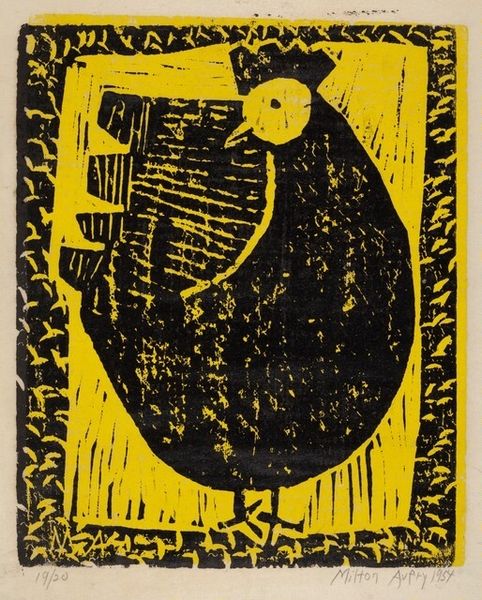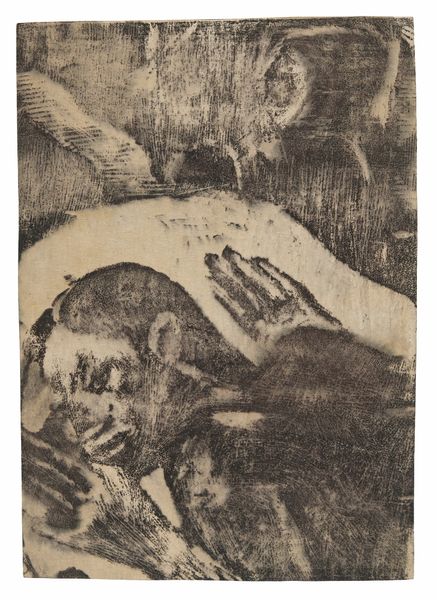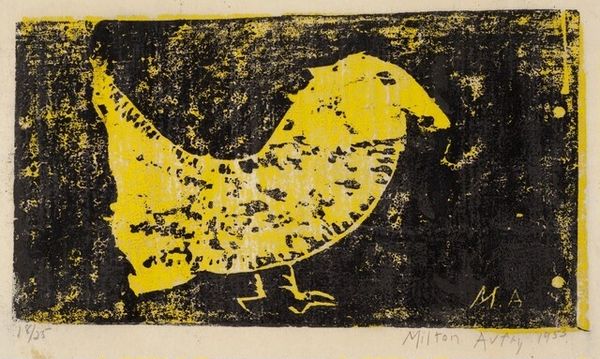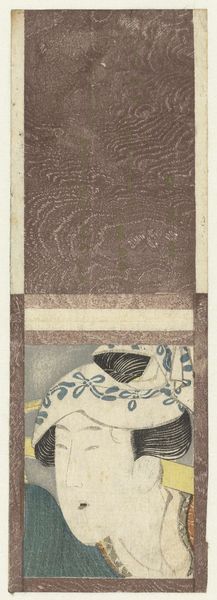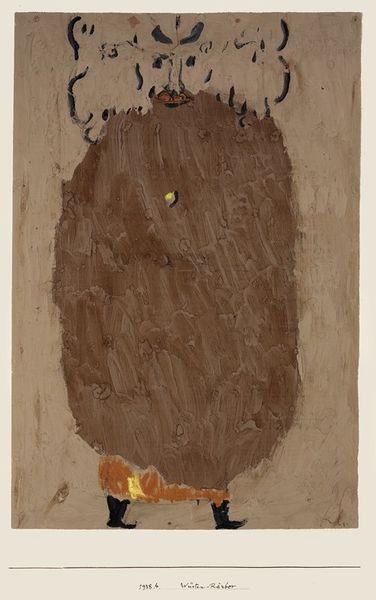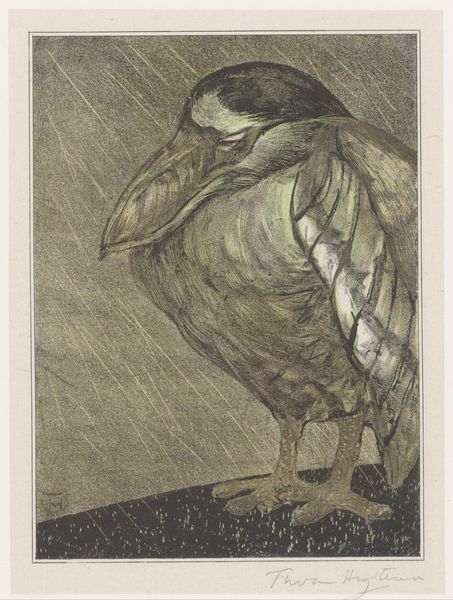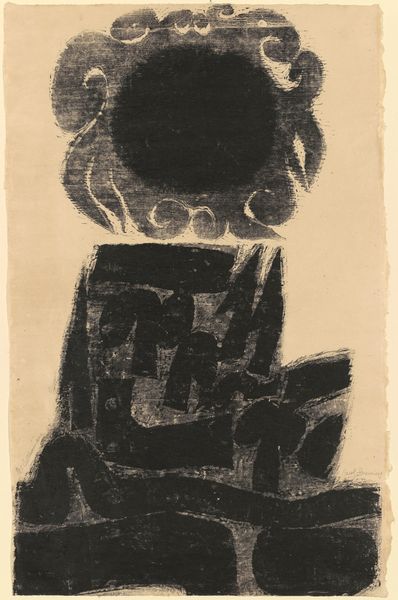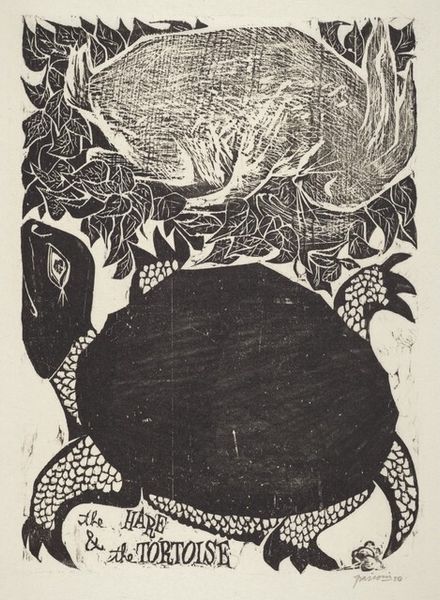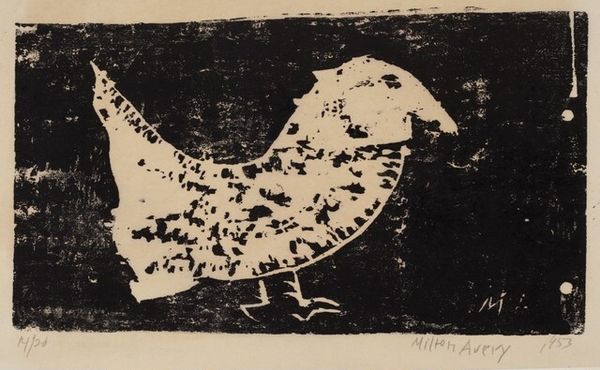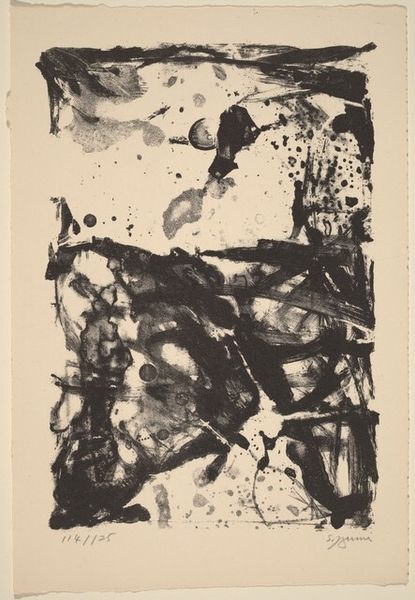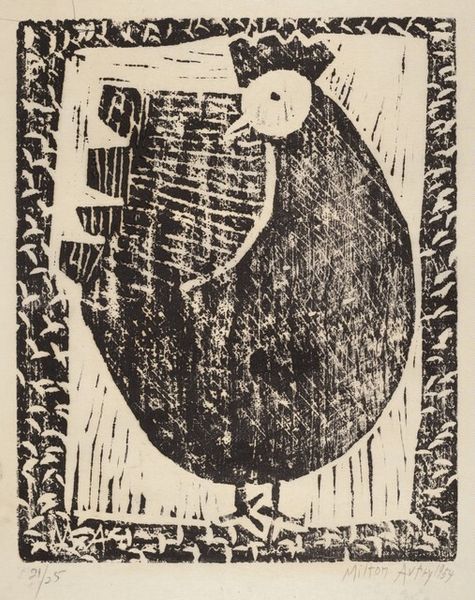
graphic-art, print, woodcut
#
graphic-art
# print
#
woodcut
#
abstraction
#
modernism
#
watercolor
Dimensions: overall: 56.7 x 27.7 cm (22 5/16 x 10 7/8 in.)
Copyright: National Gallery of Art: CC0 1.0
Editor: This woodcut print is called "Nesting" by Glen Adolph Krause, created in 1959. The starkness of the colors, alongside the abstracted forms, gives it a sense of quiet isolation. What elements stand out to you in its composition? Curator: The stark contrast between the textured, almost distressed, background and the solid form of the bird immediately grabs my attention. Notice how the artist has created depth not through traditional perspective, but through varying densities of the woodcut texture. The way the brownish-red nest grounds the dark bird creates an interesting tension too, don’t you think? Editor: I do. It almost feels precarious, as if the nest might crumble away. Is there significance in the way the artist chose to simplify the bird's form? Curator: Absolutely. By reducing the bird to its essential shape, almost a geometric solid, Krause emphasizes the abstract qualities of the image, moving beyond pure representation. Consider how the beady, unblinking eyes break up the otherwise pure geometry of its body. Also, note the strategic use of the wood grain; do you see how it both defines form and disrupts it? Editor: Yes, the grain gives the bird's body a sense of texture, which is an intriguing contrast with its simplified shape. And it prevents the block of the bird from overwhelming the composition, providing it with interesting visual properties. Curator: Precisely. It creates a visual dialogue between representation and pure form, challenging us to consider how our eyes perceive reality and abstraction simultaneously. How would you characterize the artist’s overall visual structure and how does it serve this print? Editor: That's fascinating; it makes me look at the print in a new way. The close attention to visual construction changes how one sees this work of art. Thank you for that explanation. Curator: My pleasure. Close attention to detail reveals new possibilities for seeing; that’s the joy of art and critical thought.
Comments
No comments
Be the first to comment and join the conversation on the ultimate creative platform.
